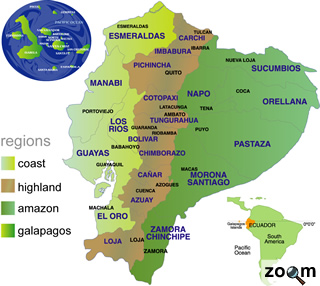In the past months I have given interviews to magazines and written some reports for my various sponsors about my time in Ecuador, so now for any online readers still out there, I now aim to provide a concise debrief from a very enjoyable and successful six months!
Community Footbridge, Pamplona, Intag
Article from Bridge Design and Engineering (March 2010) click here
In 1997, the El Niño weather phenomenon caused massive floods throughout Ecuador. In Pamplona, Intag, an important footbridge was washed away: separating the community in two halves. The community quickly rebuilt a structure in its place from felled tree logs and local timber, which after twelve years had deteriorated and become unstable.
After some years of requests for funding, the community secured funds for a new footbridge from the Inter American Development Bank. The community sought help from the NGO PRODECI, who provided the president with a design of a standard footbridge that had been produced by Ecuadorian engineers some years earlier. Without the engineering capabilities, PRODECI could offer only very limited help.
In the summer months (April-October) the Rio Pamplona has shallow parts where it is possible to cross by wading. The majority of the children who attend the community school live on the other side of the river, and crossed each day in this manner. In winter (November-March) the river becomes a torrent, and children were too frightened to cross, so school attendance was dramatically down.
"We cross by going through the water. The bridge has a lot of broken parts on the deck, and we are scared to cross. In winter, we have to use the bridge. Some of us help each other by holding hands"
Child of Pamplona's Primary School
A secondary motive to replace the bridge was to improve links for agriculture, which is essential to the community in Pamplona. In the winter months cattle cannot cross the river, and produce can’t easily be brought over the river.

Over the course of three months, I took on the project management of the footbridge, first reviewing and modifying the standard bridge design to suit the site conditions, then producing construction drawings, and buying the remaining materials and tools needed. I contracted a skilled labourer to oversee the construction of footings and concrete columns, and to teach the local community basic construction methods. This proved beneficial in later stages where the men of the community constructed all of the remaining bridge works: gabion baskets, concreting and earthworks to stabilize river embankments, then installation of the cable and deck.
The successful completion of the bridge has given the community a secure crossing over the Rio Pamplona. The provision of this bridge should result in improved education levels with higher primary school attendance and a betterment of the local economy, especially due to the ability of farmers to cross with produce.
"The solidarity shown by EWB-UK has made the people from Pamplona gain incentive and promote themselves. As well as the technical aspects, the volunteers have considered the human aspects. The people are sharing the communal work, they are taking their children to see what is being built, and they are seeing that the whole scene is changing completely. More than anything the children are happy to have a safe place to cross, after being abandoned for so many years"
Ruth Almeida, Coordinator of Intag Area for PRODECI




